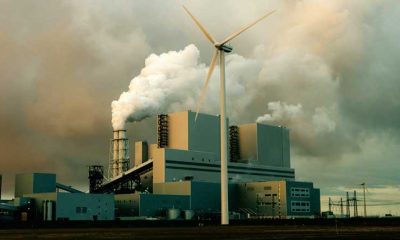Concrete
Improvements of Cement Concrete Road, Drain
Published
12 years agoon
By
admin
Bruhat Bangalore Mahanagara PalikeTender Notice No: BBMP/2012-13/OW/WORK_INDENT3711Value: Rs.29,99,497Description: Tenders are invited for Improvements of Road cement concrete Road, drain at 4th A Cross and culvert at Garvebavipalya main road in Hongasandra Ward.Contact Details: Executive Engineer, Bommanahalli Division, Begur road, Bommanahalli, Bangalore-560068, Karnataka, India, M:9900134955Deadline: 31/07/2012
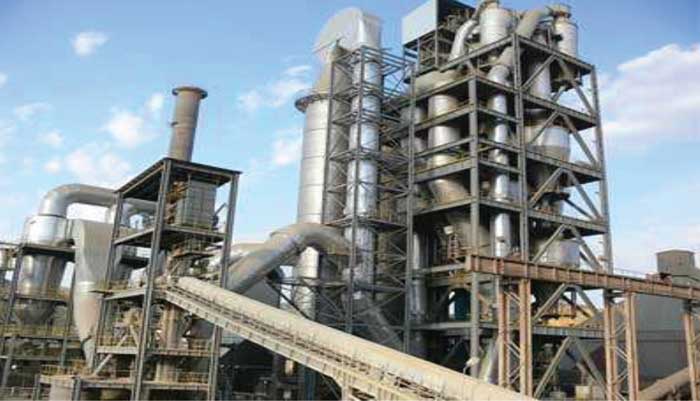
Dr SB Hegde, Professor, Jain College of Engineering and Technology, Hubli and Visiting Professor, Pennsylvania State University, United States of America, helps us understand the process of maximising efficiency and sustainability better through the use of advanced gas balancing in cement manufacturing. This is part two of a three-part series.
In the first part of the article, we studied the improved efficiency and innovation in gas balancing brought about by Internet of Things (IoT), the fundamentals of gas balancing techniques and the kiln exit gas analysis. Let us look at the role of technology in the process of advanced gas balancing.
4. Emissions abatement technologies
Emissions abatement technologies are essential for reducing the environmental impact of cement production by capturing and treating pollutants emitted from the kiln and other process sources. These technologies include selective catalytic reduction (SCR), electrostatic precipitators (ESP), baghouse filters and wet scrubbers.
4.1. Key parameters monitored and controlled
– Nitrogen Oxides (NOx): Controlled using SCR systems, which catalytically convert NOx to nitrogen and water.
– Particulate Matter (PM): Controlled using ESPs, baghouse filters, or wet scrubbers, which remove particulate matter from the kiln exhaust.
– Sulphur Dioxide (SO2): Controlled using wet scrubbers or sulphur dioxide scrubbing systems, which remove sulfur dioxide from the kiln exhaust.
4.2. Latest Technicalities
– Advanced Catalyst Materials: Utilise novel catalyst formulations to enhance the efficiency and durability of SCR systems.
– High-Efficiency Filtration Media: Employ advanced filter materials with high filtration efficiency and low pressure drop to optimize particulate
matter removal.
5. Process Integration
Process integration involves the seamless coordination and optimisation of gas balancing techniques with other aspects of cement production, such as raw material preparation, clinker cooling and cement grinding.
By integrating gas balancing with overall process control strategies, cement plants can achieve holistic optimisation and maximise efficiency.
5.1. Key Parameters Monitored and Controlled
– Raw Material Composition: Controlled to optimise kiln feed chemistry and minimise energy consumption during clinker formation.
– Clinker Cooling Rate: Controlled to optimise clinker quality and minimise energy consumption during the cooling process.
– Cement Grinding Parameters: Controlled to optimise cement quality and minimise energy consumption during the grinding process.
5.2. Latest Technicalities
– Integrated Process Control Systems: Utilise advanced control algorithms and data analytics to optimise gas balancing alongside other process parameters in real-time.
– Digital Twin Simulations: Employ digital twin models of the cement production process to simulate and optimise gas balancing strategies before implementation.
Gas balancing in cement manufacturing relies on a combination of advanced techniques and technologies to optimise combustion efficiency, minimise emissions and maximise overall process performance.
By monitoring and controlling key parameters in combustion control systems, kiln exit gas analysis, emissions abatement technologies, and process integration, cement plants can achieve significant improvements in efficiency and sustainability, contributing to a more environmentally responsible cement industry.
6. Kiln exit gas analysis and its applications
Kiln exit gas analysis is a critical aspect of cement manufacturing, offering invaluable insights into combustion efficiency, clinker quality and overall kiln performance. By monitoring key parameters in the gases exiting the cement kiln, operators can optimise process conditions, improve energy efficiency and ensure product quality.
Let’s deep dive into the significance of kiln exit gas analysis, the parameters measured, and their implications for process optimisation, along with relevant case studies demonstrating its practical applications.
6.1. Significance of kiln exit gas analysis
o Monitoring combustion efficiency
Kiln exit gas analysis provides real-time feedback on the combustion process within the cement kiln. By measuring the concentration of combustion by-products such as oxygen (O2) and carbon monoxide (CO), operators can assess the efficiency of fuel combustion. Deviations from optimal combustion conditions can indicate issues such as incomplete combustion, improper air-to-fuel ratios, or burner malfunctions, which can lead to energy waste and reduced kiln efficiency.
o Assessing clinker quality
The composition of kiln exit gases can also provide insights into the quality of the clinker being produced. Factors such as the presence of volatile organic compounds (VOCs) or excessive dust levels in the kiln exit gases may indicate problems with raw material composition, kiln operation, or cooling processes, which can affect the final product quality. Analysing kiln exit gases allows operators to identify and address issues that could compromise clinker quality and downstream cement properties.
6.2. Parameters Measured in Kiln Exit Gas Analysis
• Oxygen (O2) Content
Oxygen content in kiln exit gases is a crucial parameter for assessing combustion efficiency. High levels of oxygen may indicate incomplete combustion, while low levels may suggest fuel-rich conditions. Maintaining optimal oxygen levels ensures efficient fuel utilisation and minimises energy consumption.
• Carbon Monoxide (CO) Content
Carbon monoxide is a by-product of incomplete combustion and can be an indicator of inefficient kiln operation or burner performance. Elevated CO levels in kiln exit gases signal the need for adjustments to improve combustion efficiency and reduce emissions.
• Volatile Organic Compounds (VOCs)
VOCs in kiln exit gases can originate from various sources, including raw materials, fuels, and additives. High levels of VOCs may indicate incomplete combustion, poor kiln feed quality, or leaks in the kiln system. Monitoring VOC emissions is essential for environmental compliance and maintaining air quality standards.
*References were shared in the first part.
About the author
Dr SB Hegde, a Professor at Jain College of Engineering and Technology (Jain University) and Visiting Professor at Pennsylvania State University, United States of America, brings over thirty years of leadership experience in the Cement Industry in India and Internationally. He has published over 198 research papers and holds six patents, with four more filed in the USA in 2023. Dr Hegde’s advisory roles extend to multinational cement companies globally and a governmental Think Tank, contributing to research and policy. Recognised for his contributions, he received the ‘Global Visionary Award’ in 2020 from the Gujarat Chambers of Commerce and Industry.
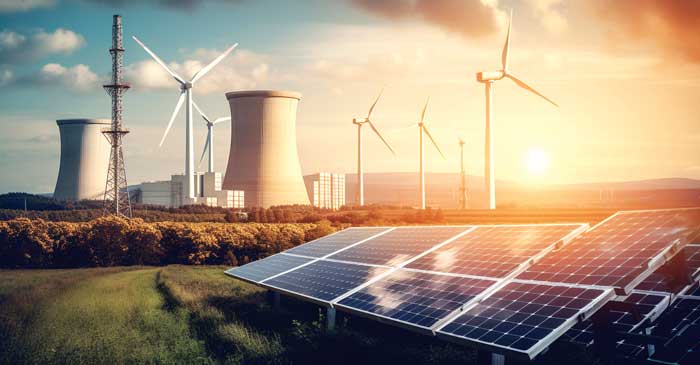
Appropriate sourcing of alternative fuels and raw materials (AFR) has long since been a bone of contention in the cement industry. As net-zero emission becomes a concrete target, every stakeholder in the cement supply chain is exploring green substitutes. Indian Cement Review discovers how collaborative efforts with other industries and innovators is proving to be a boon for the Indian cement sector.
Cement manufacturing is a major contributor to global environmental challenges, primarily due to its significant carbon dioxide (CO2) emissions. The production process is inherently carbon-intensive, involving several stages that each contribute to the overall environmental impact. The primary chemical reaction in cement production is the calcination of limestone (calcium carbonate), which produces lime (calcium oxide) and CO2.
This process alone is responsible for approximately 60 per cent of the total CO2 emissions from cement production. Additionally, high temperatures (around 1450°C) are required in the kilns to facilitate the chemical reactions necessary for clinker formation. This heat is traditionally generated by burning fossil fuels such as coal, petroleum coke, and natural gas, contributing around 30-40 per cent of the CO2 emissions.
At present, the installed capacity of cement in India is 500 MTPA with production of 298 million tonnes per annum. Majority of the cement plants installed capacity (about 35 per cent) is located in the states of south India. In PAT scheme, total installed capacity of cement in India is 325 MTPA, which contributes to 65 per cent coverage of total installed capacity in India. With the increase in growth of infrastructure, the cement production in India is expected to be 800 million tonnes by 2030, according to the Bureau of Energy Efficiency, India.
Moreover, cement manufacturing is energy-intensive, and significant amounts of electricity are consumed during the grinding of raw materials and clinker, as well as in other processes. If the electricity comes from fossil fuel-based sources, it adds to the CO2 footprint. Emissions are also generated from the transportation of raw materials to the plant and the distribution of finished cement products, further contributing to the industry’s overall carbon footprint.
In addition to CO2 emissions, cement plants emit dust and particulate matter, which can cause respiratory problems and other health issues for nearby communities. The combustion process releases nitrogen oxides (NOx) and sulphur oxides (SOx), which contribute to air pollution and acid rain. Large quantities of natural resources, including limestone, clay, and other materials, are extracted, leading to landscape alteration and ecosystem disruption.
According to the World Economic Forum report ‘Net-Zero Industry Tracker 2023’, absolute CO2 emissions declined by less than 1 per cent over the last four years amid increases in global production. Emissions intensity remained static over the same time period despite a 9 per cent rise in the clinker-to-cement ratio. The average ratio is currently
72 per cent, while the proposed GCCA target is 56 per cent. The twin forces of urbanisation and population growth are driving cement consumption in China (51 per cent global demand) and India (9 per cent global demand), which necessitates accelerated action to decarbonise the sector to mitigate the impacts of increased production.
To address these environmental challenges, the cement industry is exploring several mitigation strategies. Utilising biomass, waste-derived fuels, and other renewable energy sources can reduce reliance on fossil fuels and lower CO2 emissions. Incorporating industrial by-products like fly ash and slag can reduce the amount of clinker needed, thereby cutting emissions. Advances in kiln efficiency, carbon capture and storage (CCS), and the development of low-carbon cements are crucial in reducing the industry’s carbon footprint. Implementing energy-efficient practices and technologies throughout the production process can significantly lower overall emissions.
The Ministry of Statistics and Programme Implementation states that there is a high potential for generation of renewable energy from various sources like wind, solar, biomass, small hydro and cogeneration bagasse in India. The total potential for renewable power generation in the country as on 31.03.2023 is estimated at 2,109,654 MW This includes solar power potential of 7,48,990 MW (35.50 per cent), wind power potential of 1,163,856 MW (55.17 per cent) at 150m hub height, large hydro power of 133,410MW (6.32 per cent), SHP (small-hydro power) potential of 21,134 MW (1 per cent), Biomass power of 28,447 MW (1.35 per cent) and 13,818 MW (0.66 per cent) from bagasse-based cogeneration in sugar mills.
AFR – Need of the hour
The urgency of reducing the carbon footprint in cement manufacturing has become a pressing issue due to the industry’s significant contribution to global CO2 emissions. As the world strives to meet climate goals and mitigate the impacts of climate change, there is an increasing demand for more sustainable practices within all sectors, including cement production.
According to an article in the International Journal of Sustainable Engineering, Volume 14, 2021, In 2017, China and India, the world’s biggest producers, together produced 64 per cent of the world’s cement, or 2.61 million tonnes of cement out of 4.05 million tonnes. In 2018, these countries together estimated production of 2.66 million tonnes of the total 4.10 million tonnes, or 65 per cent of the world’s total. In the Middle East, Saudi Arabia, the region’s major cement producer, manufactured 0.47 and 0.45 million tons for 2017 and 2018, respectively. In comparison, in the same years, the United States produced 0.86 and 0.88 million tonnes of cement.
Economic and regulatory pressures further drive the need for alternative fuels and raw materials. Governments and international bodies are implementing stricter environmental regulations and carbon pricing mechanisms to curb greenhouse gas emissions. These policies create financial incentives for companies to reduce their carbon footprint and penalise those that fail to comply. Additionally, consumers and investors are becoming more environmentally conscious, favouring companies that adopt sustainable practices.
Adopting alternative fuels and raw materials offers numerous benefits for the cement industry. Utilising waste-derived fuels and industrial by-products can lower production costs by reducing reliance on expensive fossil fuels and virgin raw materials. This shift not only helps in minimising environmental impact but also supports the circular economy by recycling waste materials. Furthermore, improving energy efficiency and incorporating innovative technologies can enhance the overall competitiveness of cement manufacturers by reducing operational costs and future-proofing against potential regulatory changes.
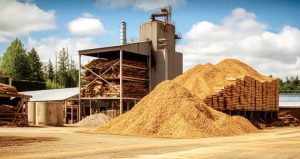
Anirudh Dani, Manufacturing Head – White Cement Division, JK Cement, states,“Safety and quality are key for co-processing of AFR. We have implemented various key safety initiatives specifically for the handling, storage, feeding, and operational processes related to AFR. We ensure the quality and safety of alternative fuels and raw materials by conducting thorough assessments, adhering to strict handling protocols, providing comprehensive
staff training, and implementing regular monitoring and testing throughout the production process.
We have created dedicated storage with all safety measures to store the AFRs with relevant environmental compliances.”
He adds, “For all AFR, we conduct a comprehensive analysis that includes calorific value, chloride content, proximate and ultimate analysis, major and minor oxides, and heavy metals. To ensure safety, we also perform compatibility tests and flash point analysis. Additionally, for all liquid AFRs, we measure pH and viscosity.”
Technological innovations
Tushar Khandhadia, Senior General Manager – Production, Udaipur Cement Works Limited (UCWL), says, “In general, 65 per cent of CO2 generated during clinker formation is through process emission, which comes from the calcination of limestone and 35 per cent is through burning of fuel. The AFR contributes to reducing the CO2 emitted from fuel combustion. Generally, at every 1 per cent increase in TSR, there is reduction of around 2kg CO2/T of clinker. As there is no substitute to the limestone for the clinker formation, increasing the TSR in clinker formation is the only option to reduce CO2 emission during clinker formation.”

Technological innovations and advanced processes play a crucial role in reducing the environmental impact of cement manufacturing. One key area of progress is advances in kiln technology and fuel efficiency. Modern kilns are designed to operate at higher efficiencies, reducing the amount of fuel required to produce clinker. Innovations such as pre-calciner technology and improved heat recovery systems contribute significantly to lowering energy consumption and CO2 emissions. Additionally, alternative fuels, such as biomass and waste-derived fuels, can be utilised more effectively in these advanced kiln systems.
Carbon capture and storage (CCS) and utilisation (CCU) technologies represent another major technological advancement. CCS involves capturing CO2 emissions from cement plants and storing them underground to prevent their release into the atmosphere. CCU goes a step further by finding ways to use captured CO2 in industrial processes, turning it into useful products like synthetic fuels or construction materials. These technologies have
the potential to drastically reduce the carbon footprint of cement manufacturing, making it a more sustainable industry.
Jigyasa Kishore, Vice President – Enterprise Sales and Solutions, Moglix, says, “Green procurement directly tackles environmental challenges by minimising resource depletion, lowering carbon emissions and protecting ecosystems. Choosing energy-efficient equipment, recycled materials and local suppliers all contribute to a smaller ecological footprint for the business.”
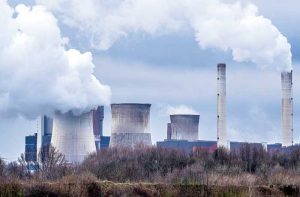
“Green procurement goes beyond the initial purchase. It considers the environmental impact of a product or service throughout its entire life cycle, from raw material extraction and production to use and disposal. Choosing products with recycled content, low energy consumption and easy end-of-life disassembly or recycling options is imperative to make sure that sustainability is built into the entire product journey rather than just the initial stage. Evaluation tools such as Life cycle sustainability assessment (LCSA) can help assess a product’s environmental, social and economic impacts through out its life cycle, from raw materials to disposal,” she adds.
The development of low-clinker and low-carbon cements is also a significant area of innovation. Traditional Portland cement relies heavily on clinker, whose production is highly carbon-intensive. By reducing the clinker content and incorporating alternative materials such as fly ash, slag and pozzolans, manufacturers can produce cements with a much lower environmental impact. Additionally, new formulations of low-carbon cements are being developed that minimise CO2 emissions during production and enhance the durability and performance of concrete.
Implications of AFR
The use of alternative fuels and raw materials in cement manufacturing has significant implications for productivity, cost efficiency, and financial viability. These alternatives can enhance the overall sustainability and economic performance of cement plants.
Radhika Choudary, Co-Founder, Freyr Energy, says, “The average operational expenses towards electricity and fuel for the cement industry ranges between 20 per cent to 30 per cent. By transitioning to solar energy, companies can notably slash these expenses, fostering improved cash flows while demonstrating environmental responsibility. Our customers, who have chosen to go solar, have not only enhanced financial viability but also earned accolades from customers for sustainable practices Commercial and industrial customers can have an ROI of 35 per cent to 40 per cent on their solar asset investment, which means a breakeven period of less than three years, which can be further expedited by leveraging tax benefits. Overall, our energy solutions not only reduce manufacturing costs but also bolster sustainability efforts, leading to enhanced profitability and market competitiveness for our clients.”
Cost efficiency
Alternative fuels and raw materials often come with cost advantages. Waste-derived fuels and industrial by-products are typically less expensive than traditional fossil fuels and virgin raw materials. By reducing reliance on costly conventional fuels, cement plants can achieve substantial savings in fuel expenses. Moreover, utilising local waste materials can lower transportation costs and reduce supply chain disruptions. Enhanced energy efficiency and optimised resource use further contribute to reducing operational costs, making the overall production process more cost-effective.
Economic viability
The financial viability of cement manufacturing is strengthened through the adoption of alternative fuels and raw materials. By diversifying energy and material sources, plants can mitigate the risks associated with price volatility in fossil fuels and raw materials markets. Additionally, many governments offer incentives, subsidies and tax benefits for adopting sustainable practices, which can improve the financial performance of cement plants. Investments in technologies that facilitate the use of alternative fuels and raw materials can yield long-term returns by enhancing competitiveness, reducing environmental compliance costs, and positioning the company as a leader in sustainability.
The use of alternative fuels and raw materials in cement manufacturing enhances productivity, cost efficiency and financial viability. By leveraging these alternatives, cement plants can achieve better operational performance, lower production costs and secure a sustainable economic future.
Conclusion
Incorporating alternative fuels and raw materials in cement manufacturing offers significant benefits in terms of productivity, cost efficiency, and financial viability. Advances in kiln technology and process optimisations enable the efficient use of alternative fuels without compromising product quality, enhancing overall productivity. These improvements not only enhance the economic performance of cement plants but also contribute to a more sustainable and environmentally responsible industry. As the cement industry continues to innovate and embrace these alternatives, it moves closer to achieving long-term sustainability and reduced carbon footprints, ensuring a resilient and economically viable future.
– Kanika Mathur
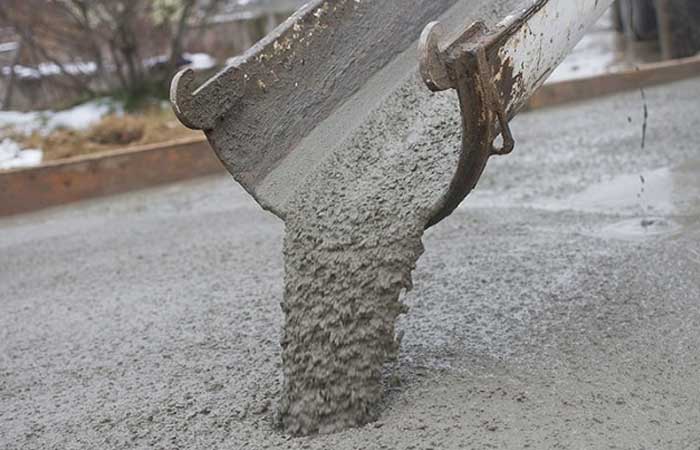
Benefits of using ternary blend-cement, flyash and GGBFS.
Cement is the prime ingredient in concrete. One tonne of cement produces around 0.8 to 1 MT of carbon dioxide. It’s worth noting that efforts are being made to reduce the carbon footprint of cement production by using supplementary cementitious materials such as flyash and GGBS in concrete. In case of ternary blended concrete, supplementary cementitious materials flyash, GGBS are used in addition to cement, sand, aggregate, water and admixture.
To evaluate the percentage of replacement of cement with flyash and GGBS, one needs to understand the properties of concrete mixed with flyash, GGBS as ingredient, structure strength, stripping time, durability requirements.
Flyash: Pulverised coal is used in thermal power plants for electricity generation. A by-product of this combustion reaction is flyash. The electrostatic precipitators (ESPs) used inside chimneys of the power plants remove flyash before ejecting out the combustion gases into the atmosphere. Flyash is a very fine particle like residue, which has pozzolanic properties. Hence, it is often blended with cement and also used as partial replacement of cement.
Flyash consists of silica (SiO2), alumina (Al2O3) and calcium oxide (CaO) as its major components.
- Due to the spherical shape of flyash, water demands in concrete are reduced and concrete becomes more cohesive.
- Silica in flyash reacts with calcium hydroxide released from cement to form CSH Gel.
- Formation of CSH Gel leads to increase in strength of concrete further and makes the concrete dense and durable.
- 35 per cent of cement can be replaced with flyash according to IS specification.
- Early strength is observed to be less for flyash concrete. Due to slow development of strength of concrete, stripping time gets delayed.
Ground granulated blast furnace slag (GGBFS): Blast furnace slag is a by-product of iron ore during the iron extraction process. Amongst all mineral admixtures, blast furnace slag has the highest specific gravity (2.8 to 3.0). The slag fineness is slightly more than that of the cement.
There are various types of slag available like air cooled slag, expanded or foamed slag, granulated slag. GGBFS possesses both cementitious and pozzolanic properties. An activator is needed to hydrate the slag.
- GGBFS increases the initial setting time of the concrete. But it does not alter the workability of the concrete much because its fineness is almost the same as that of the cement.
- The early rate of strength gain in concrete is diminished by replacement of cement in the concrete with GGBFS.
- The final strength is improved by slag cement and the durability of the concrete is increased.
- Concrete uses in marine construction are highly prone to chemical attack and corrosion. GGBFS as a concrete ingredient increases resistance against sulphate and chloride attack.
- Normally concrete tends to segregate with GGBS as an ingredient.
Ternary blend: Ternary blended concrete is observed to be more cohesive and workable due to presence of flyash in concrete. Early strength gain can be achieved by using both cement and GGBS in concrete. Concrete with ternary blend is a win-win situation in terms of good product quality, optimising the cost of concrete, durability and resistance against chemical attack. Additionally, the use of SCMs in concrete can contribute to sustainability efforts by minimising the cement content which is associated with significant carbon dioxide emission during its manufacturing process. The hydration process of ternary blended concrete is divided into primary reaction by OPC and GGBS, pozzolanic reaction of GGBS and flyash as the secondary process. Both materials react with Calcium hydroxide produced by cement hydration to form CSH gel which gives denser microstructure than conventional OPC concrete. The dense structure improves the durability properties of ternary blended concrete. Process yields to minimise penetration of aggressive chemicals such as sulphate, chloride as compared to conventional concrete mix.
– Nagesh Veeturi and Sumanta Sahu
(Communication by the management of the company)

Advanced Gas Balancing

Double Tap to Go Green

Durable Concrete

We have a state-of-the-art AFR lab

Green Procurement

Environment Ministry revises rules of solid waste management

M-sand boards new terrain
Concrete: A Highly Sustainable Building Material

Process and quality optimization in cement plant.






